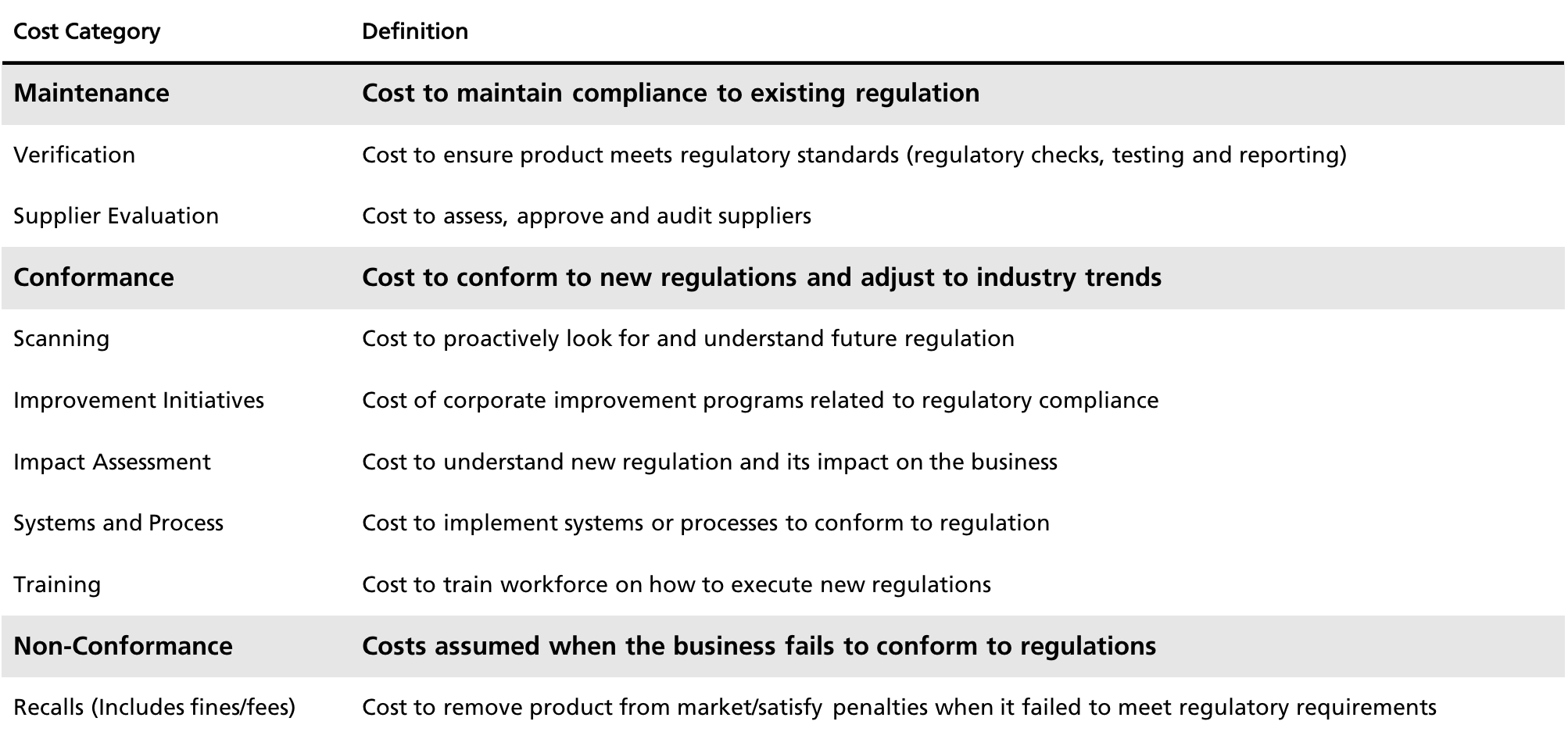F&B Compliance: Understanding the Cost of Compliance - A Framework
In the Food and Beverage (F&B) industry, compliance to an ever-changing landscape of regulations is a minimum requirement to survive. Value chains span an increasing number of markets, uncertain geopolitical times obscure the impact of both existing and proposed regulation and increased consumer scrutiny brings transparency and compliance to the forefront of purchasing decisions. Furthermore, the number of food safety recalls continues to climb, seeing a 22% surge from 2015 to 20161, resulting in billions of dollars in associated costs for the industry. Amongst all this complexity, how can large F&B organizations understand how much they’re spending on regulatory compliance and whether that investment is sufficient and effectively allocated?
Cost of Compliance: Definition
To perform this assessment, an organization must first understand that the cost of compliance (CoC) is the sum of costs to comply with existing regulation (Maintenance Cost), conform to new regulations and trends (Conformance Cost) and to make amends when regulations are not met (Non-conformance Cost). Many organizations are all too familiar with recalls and their immense cost, averaging $10 million per incident2. However, as illustrated by this definition, the cost of compliance is far more expansive than the costs incurred when failing to adhere to existing laws.

Figure 1: Cost of Compliance Categories
Cost of Compliance: Framework
To provide additional context and definition to this cost equation, we have developed the Cost of Compliance Framework. In this framework, we break down each cost category into one or more sub-categories which define the specific investments that companies can trace, assess and improve upon. For example, the cost to conform to new regulations and trends (Conformance Cost) is the sum of five costs – scanning, improvement initiatives, impact assessment, systems and processes and training – commonly incurred in F&B organizations. These sub-categories and their definitions are shown in Figure 2.

Figure 2: Cost of Compliance Framework
As illustrated by the CoC framework, there are several costs that organizations need to monitor to truly understand what they are spending to comply to regulation. In subsequent parts of this series, we focus on each of the major cost categories, providing additional context and examples for each sub-category. We will also explore what a large F&B company might spend in each area and where industry leaders are investing for success.
Works Cited
1. Maberry, Tiffany. A Look Back at 2016 Food Recalls. Food Safety Magazine. February 7, 2017.
2. Grocery Manufacturers Association. Recall Execution Effectiveness: Collaborative Approaches to Improving Consumer Safety and Confidence. May 2010.


